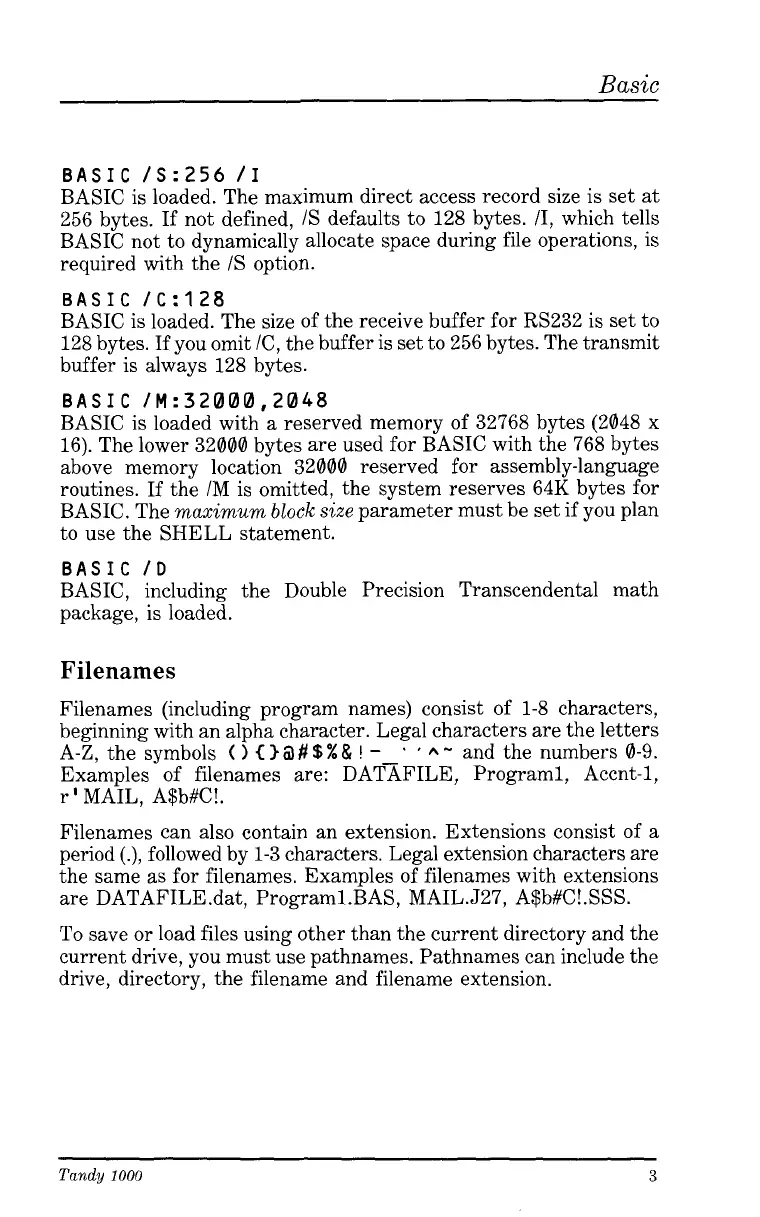Basic
BASIC
/S:256
/I
BASIC is loaded. The maximum direct access record size is set
at
256 bytes.
If
not defined,
IS
defaults to 128 bytes. /I, which tells
BASIC not to dynamically allocate space during file operations, is
required with the
IS
option.
BASIC
/C:128
BASIC is loaded. The size
of
the receive buffer for RS232 is set to
128 bytes. If you omit IC, the buffer is set to 256 bytes. The transmit
buffer is always 128 bytes.
BASIC
/M:32000,2048
BASIC is loaded with
a
reserved memory of 32768 bytes (2048 x
16). The lower 32000 bytes are used for BASIC with the 768 bytes
above memory location 32000 reserved for assembly-language
routines.
If
the
IM
is omitted, the system reserves 64K bytes for
BASIC. The
maximum
block
size
parameter must be set if you plan
to use the SHELL statement.
BASIC
/D
BASIC, including the Double Precision Transcendental math
package, is loaded.
Filenames
Filenames (including program names) consist of
1-8
characters,
beginning with an alpha character. Legal characters are the letters
A-Z, the symbols
(
1
{I@#$%&
!
-
'
A
..
and the numbers
0-9.
Examples of filenames are: DATXFILE, Programl, Accnt-1,
r
'
MAIL, A$b#C!.
Filenames can also contain an extension. Extensions consist
of
a
period
(.),
followed by
1-3
characters. Legal extension characters are
the same
as
for filenames. Examples of filenames with extensions
are DATAFILE.dat, ProgramLBAS, MAIL.J27, A$b#C!.SSS.
To
save or load files using other than the current directory and the
current drive, you must use pathnames. Pathnames can include the
drive, directory, the filename and filename extension.
*
Tandy
1000
3
